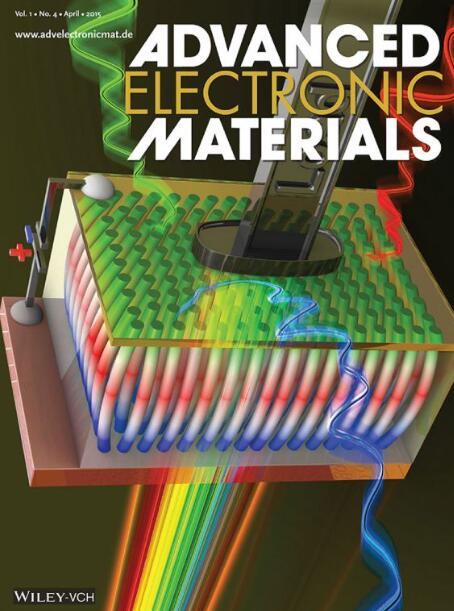Using Dopants as Agents to Probe Key Electronic Properties of Organic Semiconductors
IF 5.3
2区 材料科学
Q2 MATERIALS SCIENCE, MULTIDISCIPLINARY
引用次数: 0
Abstract
In organic electronics, conductivity doping is used primarily to eliminate charge injection barriers in organic light-emitting diodes, organic photovoltaics and other electronic devices. Therefore, research on conductivity doping is primarily focused on understanding and enhancing the properties of these doped layers. In contrast, this work shifts the focus from optimizing doped layers to leveraging the doping process as a tool for investigating fundamental material properties. Specifically, the dopant is used as an “agent” to enable the measurement of three critical parameters- ionization potential (IP), electron affinity (EA), and Coulomb interaction energy (VC) – that govern dopant ionization and play central roles in organic electronic devices in general. While these parameters can be measured experimentally, conventional approaches often involve intricate or indirect methods, such as spectral deconvolution, which may introduce ambiguities or fail to represent bulk properties. Here it is shown how consolidating the experimental data and simulations on the dopant ionization fraction and doped-induced conductivity can be used to estimate the mean IP or EA of the embedded organic molecule, and VC of the embedded charge-transfer complex. These results illustrate how measuring and simulating doped materials can provide access to the fundamental design parameters of organic electronic devices.

用掺杂剂探测有机半导体的关键电子性质
在有机电子学中,导电性掺杂主要用于消除有机发光二极管、有机光伏和其他电子器件中的电荷注入障碍。因此,有关导电性掺杂的研究主要侧重于了解和增强这些掺杂层的特性。相比之下,本研究将重点从优化掺杂层转移到利用掺杂过程作为研究基本材料特性的工具。具体来说,掺杂剂被用作一种 "药剂",用于测量三个关键参数--电离势(IP)、电子亲和力(EA)和库仑相互作用能(VC)--这些参数控制着掺杂剂的电离,并在有机电子器件中发挥着核心作用。虽然这些参数可以通过实验测量,但传统方法往往涉及复杂或间接的方法,如光谱解卷积,这可能会带来歧义或无法代表体质特性。本文展示了如何综合实验数据和掺杂剂电离分数及掺杂诱导电导率的模拟结果,来估算嵌入有机分子的平均 IP 或 EA 值,以及嵌入电荷转移复合物的 VC 值。这些结果说明了测量和模拟掺杂材料如何能够获得有机电子器件的基本设计参数。
本文章由计算机程序翻译,如有差异,请以英文原文为准。
求助全文
约1分钟内获得全文
求助全文
来源期刊

Advanced Electronic Materials
NANOSCIENCE & NANOTECHNOLOGYMATERIALS SCIE-MATERIALS SCIENCE, MULTIDISCIPLINARY
CiteScore
11.00
自引率
3.20%
发文量
433
期刊介绍:
Advanced Electronic Materials is an interdisciplinary forum for peer-reviewed, high-quality, high-impact research in the fields of materials science, physics, and engineering of electronic and magnetic materials. It includes research on physics and physical properties of electronic and magnetic materials, spintronics, electronics, device physics and engineering, micro- and nano-electromechanical systems, and organic electronics, in addition to fundamental research.
 求助内容:
求助内容: 应助结果提醒方式:
应助结果提醒方式:


